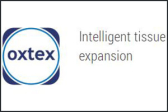|
University of Oxford Isis Fund I investments - Oxtex and Brainomix
|
|
|||||
 |
|
|||||
|
Dear Brainomix is aiming to improve stroke treatment dramatically by developing software that gives all hospitals and clinics access to reliable diagnoses for their patients. Strokes are the third highest cause of death and the primary cause of disability worldwide and yet, even in the Europe and the US, up to half of the patients who should be treated for stroke are not, because of difficulty in reading CT scan images accurately. Brainomix Co-founder Professor Alastair Buchan is the inventor of the ASPECTS system which is the most reliable method to diagnose stroke for treatment that improves patient outcomes. However, in practice the ASPECTS accuracy is often impaired by human subjectivity and its utility is severely limited by a lack of expert clinicians. Brainomix e-ASPECTS software is the first system to provide automated and standardised analysis of CT brain scans for stroke damage, assessing patients’ suitability for life saving treatment. It has strong potential to become an indispensable tool in stroke care and generate substantial health economic benefits. About Brainomix The development of biomarkers based on quantitative imaging provides powerful non-invasive and cost effective diagnostic tools for stratified medicine. Capitalising on a multidisciplinary team of experts, Brainomix, a start-up company from the University of Oxford, aims to become a leader in imaging biomarkers for neurological and cerebrovascular disorders. The company’s vision is to equip physicians with automated medical imaging tools that will allow them to select the right patient for the right treatment. Brainomix's flagship product is the e-ASPECTS software. This automatically implements the Alberta Stroke Program Early CT Score (ASPECTS) clinical scoring methodology for detecting and assessing signs of stroke damage on computed tomography (CT) scans from patients with acute stroke. ASPECTS was invented by Professor Alastair Buchan, a co-founder of Brainomix and the Dean of Medicine and Professor of Stroke Medicine at the University of Oxford. The software will assist clinicians worldwide with the assessment of patient eligibility for life saving treatment. It will be used both by hospitals offering a stroke service and stroke clinical trials, providing major benefits to patients and the healthcare system. The Brainomix co-founders and team consist of clinicians, scientists, technologists and business professionals specializing in neurology, neuroscience and medical imaging fields. Brainomix is ideally positioned to commercialise innovative medical imaging technologies that will revolutionise and improve the treatment of patients with neurological and cerebrovascular disorders. The Market for Stroke Treatment Stroke is a huge and growing problem worldwide. It is a leading cause of death and disability and places an immense burden on healthcare systems. For instance in England alone, the economic cost of stroke is estimated at £8 billion per year. This is the result of stroke being the most common cause of disability, with 50% of patients left dependent on other people. In addition, stroke patients occupy around 20% of all acute hospital beds and 25% of long-term beds. Strokes are the third highest cause of death and the primary cause of disability. In 2010 there were over 11,500,000 new ischaemic strokes worldwide, and the number is increasing as the population grows and ages. The widening gap of demand and supply provides a huge market opportunity for innovative solutions that can be clinically accepted as best practice, giving a speedy and conclusive analysis of CT images regardless of other resources available. Exit Strategy Once adopted, Branomix’ e-ASPECTS system could be highly valuable to many potential acquirers. Health IT and medical imaging are highly active M&A sectors. In the medical imaging space, M&A activity has largely been driven by the large incumbent healthcare companies seeking innovation and new products. Management Dr Michalis Papadakis, CEO, Founder, is a noted personality within the international stroke research community. He has been CEO since the creation of the company. He has managed the development of the e-ASPECTS software and led successful applications to the Technology Strategy Board (TSB) and the EU Horizon 2020 programme to raise more than £950,000 of non-dilutive finding. Previously the Scientific Director at the Laboratory of Cerebral Ischemia at the University of Oxford, Michalis has managed several high impact projects that have attracted significant media attention. Professor Alastair Buchan, Senior Medical Science Advisor, Founder, is the inventor of ASPECTS and a world leading clinician in stroke treatment, with over 200 publications to his name. He is currently Dean of Medicine and Prof. of Stroke Medicine at the University of Oxford. Professor Iris Grunwald, Medical Director, Founder, has been instrumental in the development of the e-ASPECTS algorithm. She is a consultant radiologist with an international reputation in implementing stroke interventions. Iris is the Director of Neuroscience and Medical affairs at Anglia Ruskin University and is also building up an interventional stroke service at Southend University Hospital. Eric Greveson, CTO, received a 1st class M.Eng from Cambridge University specializing in computer vision, and has been involved in several 3D imaging projects in the medical and security sectors, previously working with 2d3 and Yotta. Dr Constantin Thiopoulos, Business Development Manager, Founder, is a co-founder of Brainomix and is responsible for its business development. He has more than 15 years hands-on experience in the commercialization of R&D results and has been consultant of European companies and R&D organisations for emerging technologies. Andrew Barker, Chairman, is an experienced Chairman, NED and investor in early stage companies. Having been involved in the early stages of computing over in Silicon Valley, he later worked to build Intel’s European venture arm. He is Chairman of Intelligent Ultrasound, a medical imaging spin-out, and advisor to a number of growth stage ventures. |
||
|
|||||
|
Oxtex Ltd. is a near-market medical device company which has developed a novel self-inflating tissue expander for the primary use in reconstructive and dental/oral surgery based on technology developed at Oxford University. Oxtex received the OBN Bioscience award for Best Emerging MedTech in 2011 and Best New Medtech product in 2012. The Product A self-inflatable tissue expander that enables the creation of additional skin through controlled stretching in a wide variety of anatomical locations. The expander has applications in many areas of plastic surgery (burns/scar revision, breast reconstruction, cleft palates, cross bite), as well as the veterinary market (tumor removal). Successful tissue expansion reduces the cost of treatment and is a significant improvement to other alternative forms of surgical reconstruction. The Oxtex technology offers many advantages over existing balloon and hydrogel technologies:
The Challenge A significant challenge in reconstructive surgery is the absence of sufficient skin in the area where the surgery is taking place. However, skin has the remarkable ability to grow when put under controlled tension leading to the creation of additional skin and associated soft tissue. This is what the Oxtex device exploits. The device is implanted underneath the skin close to the repair site, where it will slowly expand in one direction causing the skin to grow. After the expander has been removed, this "new skin" can then be used in the reconstruction. The Market The global market for veterinary and medical tissue expanders is estimated today at over $1bn annually with significant growth in a number of sectors, especially in dental/oral applications. Background The company was incorporated in 2011 and has raised £1.5m to date from angel investors. It has also secured a £1.25m research collaboration with the University of Malaya to develop devices for the treatment of cross bite in man. Oxtex is ISO13485 certified for the design and manufacture of devices and clinical trials for scar revision and cross bite will commence in early 2015. A range of devices for small animal veterinary application will also be launched in January 2015. The company is led by Dr David Jackson (CEO) an experienced entrepreneur with over 25 years’ experience in early stage technology companies and a proven track record of taking early-stage opportunities through to successful exit. Management / Team Nicholas Edwards, Chairman, graduated in Physiological Sciences from The Queen’s College, Oxford in 1982 and then completed his training in Clinical Medicine (BM, BCh) at Oxford in 1985. After research into the use of Artificial Intelligence to perform medical diagnosis, he completed house jobs in Cardiology and General Surgery before joining Andersen Consulting in 1986. He spent 18 years with Andersen Consulting (now known as Accenture), including 8 years as a partner, and was the global leader of Accenture’s Pharmaceutical R&D business. In 2005, he was one of the founders of Kinapse, and MedInnovate. He is an investor and supporter of several life science start-ups. Nicholas is an Associate Fellow of Green Templeton College, Oxford and sits on their Development Committee. He is currently working on a Centre based within the University of Oxford developing better methods of translating medical innovations into useable treatments, with an initial focus on pharmaceutical R&D. David Jackson, CEO, is an experienced entrepreneur with over 25 years experience in early stage technology companies, he has a proven track record of taking early-stage opportunities through to exit. His last company, Site Intelligence Ltd is now a global player in the muti-channel customer analytics software market, supporting blue chip companies world-wide. Before that, he was part of the senior management team that took Oxford Molecular Group, one of the first Isis spin out companies, through to a main market listing in 1994 and becoming COO in 1996. Subsequently, he was the executive Chairman of FWPharma Systems Ltd, a management buyout company in clinical trials management software that was sold to Parexel inc in 2002. He was also a founder of Screen Science Ltd, a multi-media training company sold to the Adval group in 1998. David is also the Non-Executive Chairman of Brain in Hand Ltd, a company providing mobile device applications to help those with impaired executive brain function. Jan Czernuszka, Technical Director, is a University Lecturer at the University of Oxford and a Fellow of Trinity College. He is a Founding Scientist of Oxtex and its Chief Technical Officer. Jan set up and is Head of the Biomaterials Group at Oxford: this is now a Wellcome Trust Centre for Tissue Engineering. He has over 100 publications and nine patents and is regularly invited to give presentations at international conferences. He has been part of a group that obtained Oxford’s largest single grant of approximately £56m. Jan has been Dean and vice-President of Trinity College and is currently Chairman of the Faculty of Materials. He has a BSc (Hons) and ARSM from Imperial College, London, a Ph.D from the University of Cambridge and an M.A from the University of Oxford. Marc Swan, Clinical Director, is currently the Interface Cleft Fellow in the Department of Plastic and Reconstructive Surgery at Great Ormond Street Hospital in London. He undertook his specialty training in Oxford and obtained the FRCS (Plast) in 2011. He has worked extensively overseas including the Red Cross Children’s Hospital (Cape Town, Republic of South Africa), CoRSU Hospital (Kampala, Uganda) and a Fellowship at The Hospital for Sick Children (Toronto, Canada). The initial development of a self-inflating tissue expander was the motivation for his doctorate undertaken jointly between the Nuffield Department of Surgery and the Department of Materials in the University of Oxford. He has since returned to full time NHS clinical practice although he maintains an active interest in the hydrogel research programme. Marc has authored over 50 scientific and medical papers, two patents, and is a contributor to the Oxford Handbook. Use of Funds until 2016
Sales Opportunity beyond 2016 There is a significant sales opportunity for the use of soft tissue expanders in cosmetic, reconstructive and dental surgery. To seize this opportunity Oxtex will need to raise further amounts of funding after the current round. Exit Strategy The most likely exit scenario is through a trade sale. With a successful marketed product addressing a secure global market Oxtex anticipates that applying industry standard multiples of revenue and EBITDA will result in an attractive valuation for the company.
|
||
|
||
|
||||||||||||||||||||||||||||||||||||||||||
Fund |
Status |
Gross NAV |
Net NAV |
|---|---|---|---|
| UK Tech I | Fully Invested | 150.1% | 191.8% |
| UK Tech II | Fully Invested | 228.8% | 328.4% |
| UK Tech III | Fully Invested | 89.4% | 110.4% |
| UK Tech IV | Fully Invested | 103.2% | 135.4% |
| UK Tech V | Investing | - | - |
| University of Cambridge Enterprise I | Fully Invested | 146.5% | 188.1% |
| University of Cambridge Enterprise II | Investing | - | - |
| University of Oxford Isis I | Investing | - | - |
| Parkwalk Opportunities | Evergreen | n/a | n/a |
Valuations as of 10th September 2014. Net NAV includes income tax relief and fees on investment
Parkwalk’s current portfolio consists of 30 companies, which have raised in excess of £250m of funding between them since 2010 and over 600 patents protect their technology and processes.
Overall, Funds I-IV’s portfolio comprises of 9% Series ‘A’, 33% Series ‘B’, 25% Pre-IPO and 33% AIM listed.
Past performance is no guide to future performance. The price of a fund can fall as well as rise. Investors may receive back less than originally invested.
|
|||||

